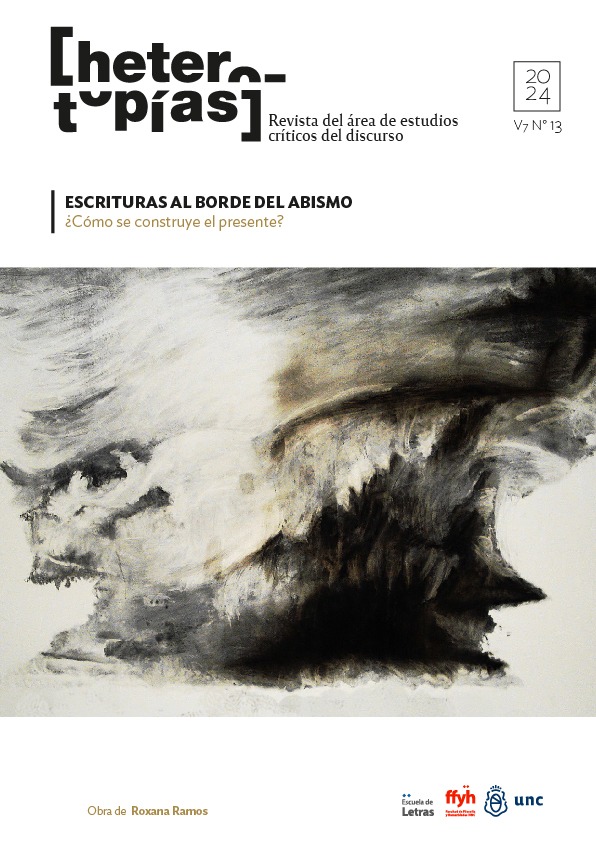To Imagine and Document: Art’s Double Life
Main Article Content
Abstract
In the age of modernity, imagining and documenting were two opposing activities. The present age unites them, and I want to explore what takes place when that union occurs, because I see it as the most critical feature in much contemporary production. If the nineteenth century debated realism, and if (generally speaking) the twentieth century dealt with the avant-garde, then the twenty-first century poses the question of the archive and the documentable, not merely a question about the past but also a concern for how practice relates to the present. The “archive” is a sort of fragmentary link to the past; it contests the idea of history and meaning (not discounting them altogether, but contesting them), for it presents not “an account,” but rather allows for different narratives. The word “archive” recurs in almost all social and humanistic disciplines and is a key element in the practice of art and literature. But at the same time, the archive can be conceived as an action imposed upon documentality. It is here that the imagination (in the sense of “creation”) enters, generating a dynamic that extracts art and literature from their isolation within institutions and re-orients them outward toward the artistic institution. I have selected certain works to explore the interplay between imagining and documenting; operating within an extremely wide panorama, they leave their mark and experiment with new possibilities. Specifically, I will focus on the works of Dani Zelko, Mariana Mariana López, Galo Ghigliotto, Vivi Tellas and Paz Encina. Art, literature, and activism can do nothing other than to continue to call attention to the world of violence and inequality, not in the sense of facts in themselves but rather the way in which our feelings toward those facts become naturalized. I think of this double life as the dual activities of imagining and documenting. But there is also the duality of “critical response,” the risk of encapsulating contemporary works within the space of their own field.
Downloads
Article Details

This work is licensed under a Creative Commons Attribution-NonCommercial-ShareAlike 4.0 International License.
Those authors who have publications with this journal, accept the following terms: Those authors who have publications with this journal, accept the following terms:
a. The authors will keep their copyright and guarantee to the journal the right of first publication of their work, which will be simultaneously subject to the Creative Commons Attribution - Non-Commercial - Share Alike (by-nc-sa) Attribution License; no commercial use of the original work or any derivative works is allowed, the distribution of which must be done with a license equal to the one that regulates the original work.
b. Authors may adopt other non-exclusive license agreements for the distribution of the published version of the work (e.g., deposit it in an institutional telematic archive or publish it in a monographic volume) provided that the initial publication in this journal is indicated.
c. Authors are allowed and recommended to disseminate their work through the Internet (e.g. in institutional telematic archives or on their website) before and during the submission process, which may lead to interesting exchanges and increase the number of citations of the published work. (See The effect of open access).
References
Cámara, M. (2017). Restos épicos. Relatos e imágenes en el cambio de época. Buenos Aires: Livraria.
Encina, P. https://www.youtube.com/watch?v=g9gPiBpaF8c
Garramuño, F. (2022). La vida impropia. Anonimato y singularidad. Villa María: Eduvim.
Ghigliotto, G. (2019). El museo de la bruma. Santiago de Chile: Laurel.
Horne, L. (2021). Futuros menores. Filosofías del tiempo y arquitecturas del mundo desde Brasil. Santiago: Universidad Alberto Hurtado.
López, M. Museo. (2018). Buenos Aires: ndirecciones.
Montaldo, G. (2022). “Producción, circulación, consumo. El mundo de la literatura.” In Special Volume: “Gatekeepers o cómo se produce la literatura latinoamericana mundial.” Revista chilena de literatura, n. 105, May.
Rodríguez, F. (2022). Señales de vida. Literatura y neoliberalismo. Villa María: Eduvim.
Speranza, G. (2022). Lo que no vemos, lo que el arte ve. Barcelona: Anagrama.
Tellas, V. (2017). Biodrama. Proyecto Archivos. Seis documentales escénicos. Editado por P. Brownell y P. Hernández. Córdoba: Papeles Teatrales/UNC.
